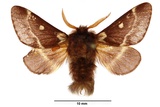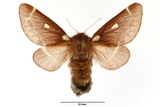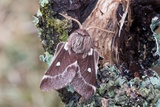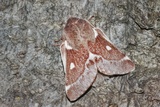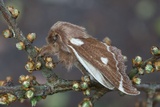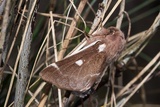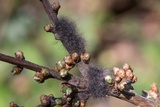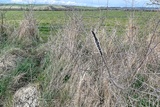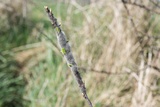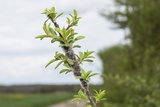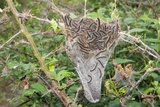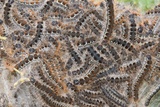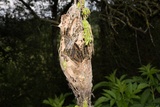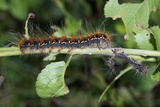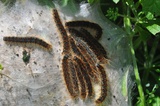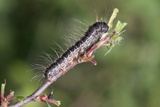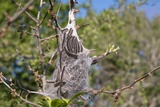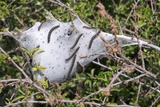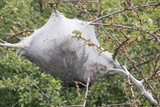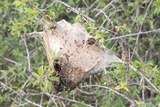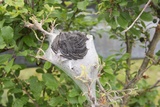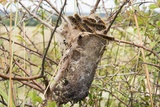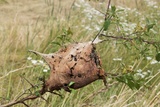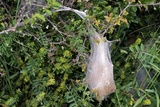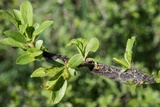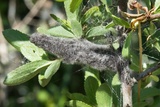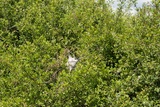Eriogaster lanestris (Linnaeus, 1758) Species
Last modified: June 5, 2025, 2:37 p.m.
A very rare and very local species in Belgium, only known from some localities in the southern provinces.
Adults are not often seen, but larvae in their communal webs are frequently found.
This species is considered Regionally Extinct according to the IUCN Red List category for Flanders 2023.
Details
- Classification
- Family: Lasiocampidae > Subfamily: Lasiocampinae > Tribus: Eriogastrini > Genus: Eriogaster > Subgenus: Eriogaster > Species: Eriogaster lanestris
- Vernacular names
- Wolspinner (NL), Small Eggar (EN), La Laineuse du Cerisier (FR), Frühlings-Wollafter (DE)
- First mention in Belgium
- De Sélys-Longchamps E. 1837. Catalogue des Lépidoptères ou Papillons de la Belgique, précédé du tableau des Libellulines de ce pays. — — : 1–29. On page 25 (as Bombyx Lanestris). view page
- Status
-
Native
Distribution
Egg
Females always lay their full egg complement into one egg batch. Eggs hatch 3 to 4 weeks later than Eriogaster catax, when both Prunus spp. and Crataegus spp. are blooming.
Cocoon/pupa
It hibernates as a pupa in a sturdy brown, spherical cocoon, usually near the ground between fallen leaves or under debris. The chrysalis can hibernate several times (up to 9 times) before the butterfly hatches.
Bionomics
The eggs are deposited in a group at a terminal shoot of the foodplant, often on thin branches and covered with a spinning in which the hairs of the abdominal last segment of the female are used.
The nests can be found both on low bushes and high in the trees, hedges, and shrubs along meadows, and open spaces that have been lightly pruned in the autumn are preferred over unpruned ones. The nest serves as an activity center and plays an important role in the thermoregulation of the colony.
The caterpillars live gregariously in a tough, white, silken web from where they feed at night on the adjacent leaves, during the day with warm sunny weather they sunbathe on the silk. The larvae will pupate within five weeks. The species hibernates in the pupal stages and sometimes the pupa hibernates several times.
The adults are active at night and artificial light is generally ineffective in attracting the imagos, so they are rarely found in light traps.
Flight periods
One generation a year from late February till mid-April.
Habitat
Xerothermic slopes, roadsides, poor bushy grasslands, meadows lined with Prunus spinosa and Crataegus and other deciduous trees and bushes.
